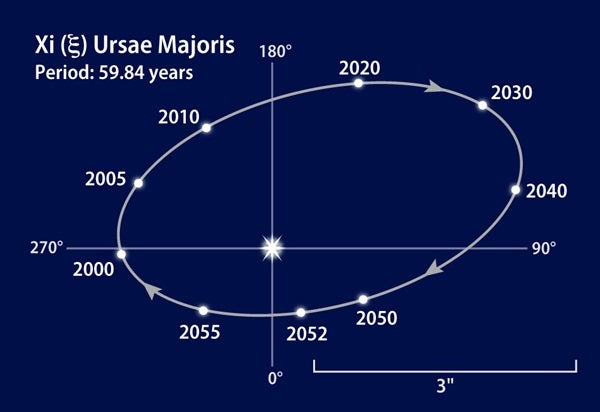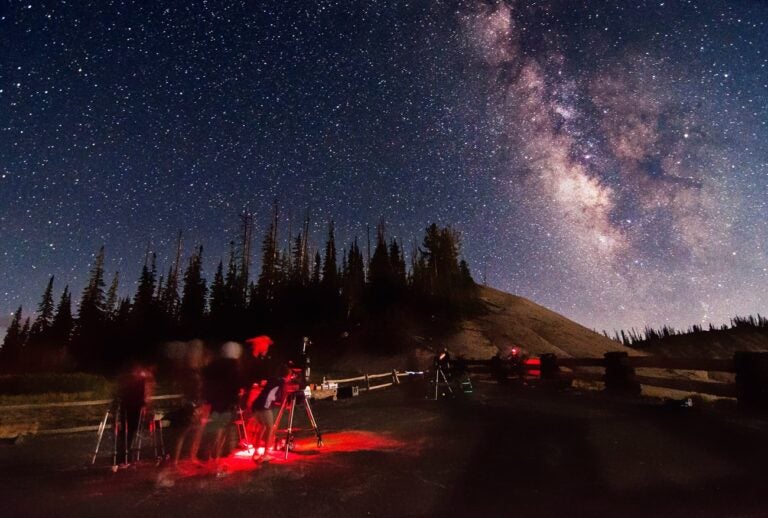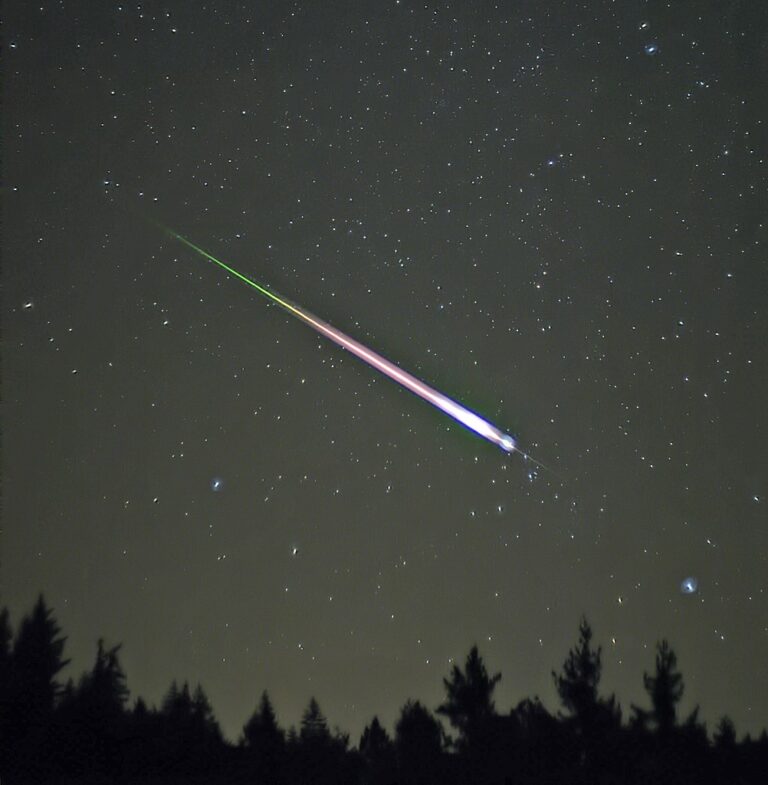In a notebook, I carefully sketched Mizar and its companion (designated Mizar A and B, respectively), and then added their neighbor Alcor as a reference point to indicate the movement of Mizar B. A few months later, I returned, confident that enough time had elapsed for Mizar B to have changed position. Not so! I had no idea that the orbital periods of most visual binary stars are measured not in months or years, but in decades or centuries. Nearly 50 years later, Mizar and its partner are still “locked in.”
My July 2011 column introduced three visual binaries with orbital motions discernible within a few decades. This month, we’ll explore another rapidly moving binary: Xi (ξ) Ursae Majoris (UMa), also known by the fun-to-say name Alula Australis.
Sir William Herschel first noted this star’s duplicity in May 1780. Its rapid orbital motion allowed the French astronomer Felix Savary to compute an orbit in 1828, making Xi UMa the first binary star to have its path determined.
The orbital period of Xi UMa is just a shade under 60 years. In 1971, I viewed the pair through a 3-inch f/10 reflecting telescope and magnifying power of 60x. The two were separated by a comfortable 3″, and the magnitude 4.8 companion lay southeast of the primary, which glows at magnitude 4.3. By the early 1990s, the pair had closed to less than 1″ and the companion was north of the main star.
Since then, the two have separated (they are now 1.6″ apart), and the companion has drifted 180° to a point nearly south of the main star. If I’m fortunate enough to be around 20 years from now, Xi UMa will appear exactly as it did when I first viewed it. I’ll have followed a binary star through an entire orbit. What a neat lifetime experience!
Most observers attribute yellow colors to this pair — an accurate impression, as the two sport Sun-like spectral classes of G0 (primary) and G5 (secondary). In mass and size, each is a near-twin of our star. If we were to mimic the Xi UMa system by adding a Sun-like star to our solar system (forgetting the obvious orbital chaos it would wreak on the planets), the view from Earth would be astounding. Our Sun’s new partner would be a dazzling beacon, only twice the apparent diameter of Jupiter but shining with the brilliance of 1,600 Full Moons!
Nu (ν) Draconis (magnitudes 4.9 and 4.9; 63.4″ separation): These widely spaced “twins” are a delightful sight in binoculars or rich-field scopes.
Mizar (magnitudes 2.2 and 3.9; 14.5″ separation): If you’ve never seen a double star and don’t know where to look, start here (it’s the middle star in the handle of the Big Dipper). A magnification of 50x will split Mizar and also include its neighbor Alcor in the field of view.
Cor Caroli (Alpha [α] Canum Venaticorum) (magnitudes 2.9 and 5.6; 19.3″ separation): This double is another low-power beauty not unlike Mizar in appearance.
Polaris (Alpha Ursae Minoris) (magnitudes 2.1 and 9.1; 18.2″ separation): Don’t be fooled by the wide separation of our North Star’s components. Because of their unequal brightness, the companion hides in the glare of the main star. Use a magnification of 100x or more to bring it into view.
Izar (Epsilon (ε) Bootis) (magnitudes 2.6 and 4.8; 2.8″ separation): I nicknamed this double the “White Whale” because I pursued it night after night as obsessively as Captain Ahab pursued Moby Dick. I finally “harpooned” the pair through a 3-inch reflector and magnification of 120x
Algieba (Gamma [γ] Leonis) (magnitudes 2.4 and 3.6; 4.6″ separation): This colorful pair (both yellowish) is a striking sight at 75x to 100x.
And finally, great news for double-star aficionados: You must stop by the blog “Star Splitters” (http://bestdoubles.wordpress.com), authored by amateur astronomers Greg Stone and John Nanson. Each entry blends pertinent data on the featured double star(s) with helpful finder charts and eyepiece impressions. Tying it all together are the authors’ narratives relating their experiences observing these pairs. The result is an informative and fun site sure to entertain and delight the avid double-star observer. You may want to subscribe and receive notifications of new posts by email.
Questions, comments, or suggestions? Email me at gchaple@hotmail.com. Next month: We prepare for the astronomical event of the year! Clear skies!











